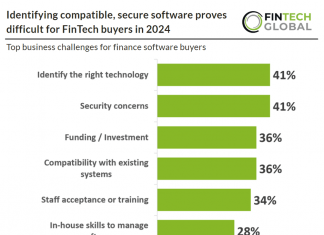Wealth transfer is an important topic for all wealth managers, but most fail to keep hold of the heirs. But what if there was a way to boost retention rates?
Kidbrooke has explored how firms can better support wealth planning for the next generation.
It pointed to a Russell-Cooke study that estimates $15.4m will be transferred by families to their children in the UK over the next decade. However, a report from Russell Investments found that only 26% of families have a full strategy on wealth transfer, and once the transfer occurs, 90% of the heirs change advisors.
Making it even worse, there are some countries, like Switzerland, where laws prevent advisors contacting heirs of a deceased client. As a result of the poor communication channels, 70% of families lose control of their assets after the transfer.
Kidbrooke explained the poor situation has many causes. Some parents prefer to put their assets into trust for grandchildren, rather than pass their estate on to their heirs. Others set strict conditions for their heirs to be able to access their wealth.
There are many other reasons and obstacles families have regarding their wealth transference. But Kidbrooke believes wealth managers can motivate all members of a family to participate in planning for the transfer of wealth to the next generation.
First of all, it pointed to connectivity. It stated that Baby Boomers love a Microsoft Excel spreadsheet and generic forms of communication are expected and acceptable. While Millennials prefer digital channels that are simple to navigate and have hyper personalisation.
As a result, a wealth manager needs to reconnect all of their data from their silos and use this to create portfolio simulations and interactive, holistic wealth experiences.
For example, Kidbrooke’s OutRank tool allows a firm to create financial simulations with data tested under different scenarios, such as high versus low interest rates, equity valuations, energy prices and more. This is perfect for Millennials that are used to seeing data presented in a visually interesting, interactive or gamified manner.
The next challenge is commitment. Kidbrooke explains that while Boomers are happy to receive newsletters, fact sheets, or reports downloaded from a portal, Millennials prefer to get their data on the fly. This means being able to access things quickly through mobile offerings and self-service options.
Thirdly, firms need to bolster confidence with the younger generation. It said, “Whether parents are leaving a business, a portfolio of investable assets, property, or liquidity from the exit of a business that needs to be invested, they need to convey their wishes to their children. Equally, the heirs need to understand the intentions of the parents while at the same time infusing the strategy with their own ideas.
“The whole wealth planning discussion can be daunting and stressful, but it doesn’t need to be. Cash flow modelling helps both generations visualise what is possible with respect to the preservation and growth of the family’s wealth.”
Another challenge is to make wealth management high-touch and high-tech. It stated that through technology, firms can better engage with both generations to participate in a measured discussion about assumptions, fears, concerns and aspirations for their family’s wealth management strategy.
Kidbrooke concluded, “Are you looking to capitalise on the Great Wealth Transfer? Data is everywhere and even sophisticated investors can become overwhelmed with information. Therefore, if your firm can convert data to actionable information, you can differentiate yourself and establish a unique wealth planning offering in the market.”
Read the full report here.
Copyright © 2022 FinTech Global











